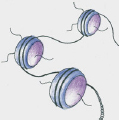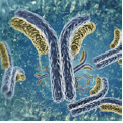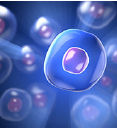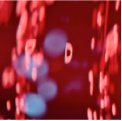 암 연구를 위한 제품 선택가이드
Solutions for Cancer Research
암 연구를 위한 제품 선택가이드
Solutions for Cancer Research
암(癌, Cancer) 혹은 악성종양(惡性腫瘍, Malignant tumor, Malignant neoplasm)은 세포주기가 조절되지 않아 세포분열이 계속되는 질병으로, 폐암 · 위암 · 유방암 · 대장암 등이 있다. 암과의 싸움은
여전히 힘든 싸움으로 남아있지만, 암 연구 분야의 지속적인 발전은 큰 희망을 준다. 다카라바이오는 암 바이오마커 연구, 단일 암세포 분석, 암 후성유전인자 분석, HLA Typing, T-cell 치료
및 프로파일링, 항체치료, CRISPR/Cas9 유전자 편집 등의 암 연구를 위한 다양한 제품과 기술을 제공한다.

1. 암 바이오마커 (Cancer Biomarker Discovery)
Next Generation Sequencing (NGS) 기술의 발전에 따라 종양유전자 (oncogene), 종양억제유전자 (tumor suppressor gene)를 이용한 암 바이오마커 연구가 가속화되고 있다. 다카라바이오에서는 Liquid biopsy (Circulating tumor DNA (ctDNA), Cell-free RNA (cfRNA), Cell-free DNA (cfDNA), Urine 등), FFPE 샘플, Exosome 등에서 암 바이오마커 유전자를 검출 및 분석할 수 있는 제품을 제공한다.


1) Low input mRNA · DNA 염기서열 분석
- 소량의 RNA, DNA 샘플을 위한 NGS Library Preparation Kit
- FFPE RNA/DNA 및 Liquid biopsy 유래의 DNA, RNA 분석 가능 (ctDNA, cfRNA, cfDNA 외)
References
Selected publications citing the use of ThruPLEX-Plasma Seq Kit for non-invasive monitoring of tumor chemo-resistance
1. Mayrhofer, M. et al. Cell-free DNA profiling of metastatic prostate cancer reveals microsatellite instability, structural rearrangements and clonal hematopoiesis. Genome
Med. 10, 85-98 (2018).
2. Mouliere, F. et al. Detection of cell-free DNA fragmentation and copy number alterations in cerebrospinal fluid from glioma patients. EMBO. 12, e9323 (2018).
3. Murtaza, M. et al. Non-invasive analysis of acquired resistance to cancer therapy by sequencing of plasma DNA. Nature 497, 108-112 (2013).
4. Patel, K. M. et al. Association of plasma and urinary mutant DNA with clinical outcomes in muscle invasive bladder cancer. Sci. Rep. 7, 5554 (2017).
5. Xia, Y. et al. Copy number variations in urine cell free DNA as biomarkers in advanced prostate cancer. Oncotarget 7, 35818-35831 (2016).
2) Exosomal RNA 분석
- 고순도의 Exosome 분리를 위한 독자적인 Capturem™ membrane spin column
- Exosomal RNA 및 miRNA 분석을 위한 SMARTer® NGS 시리즈
References
Selected publications citing the use of SMARTer smRNA-Seq Kit for noninvasive miRNA profiling in prostate cancer diagnosis
1. Guelfi, G. et al. Next generation sequencing of urine exfoliated cells: an approach of prostate cancer microRNAs research. Sci. Rep. 8, 7111 (2018).
2. 단일 암세포 분석 (Single Cancer Cell Analysis)
종양세포에서 나타나는 복잡성 (Complexity)과 이질성 (Heterogeneity)은 종양세포 (cancer cell), 지속성 암세포 (Cancer persister cells), 순환종양세포 (Circulating Tumor Cell; CTC)를 단일세포
수준에서 해석함으로써 분석 가능하다. 그러나 단일세포를 연구하려면 아주 민감하고 재현성 높은 분석 방법이 필요하며, 다카라바이오에서는 독자적인 SMARTer
® 기술을 이용하여 단일세포
수준의 염기서열 분석을 위한 제품을 제공한다.

1) Single-cell Genome Sequencing
References
Selected publications citing the use of PicoPLEX technology for high performance CNV analysis and the genomic profiling of single cells from FFPE tumor tissues and circulating tumor cells, and G&T-seq
1. Lieselot D. et al. (2017). Performance of four modern whole genome amplification methods for copy number variant detection in single cells. Scientific Reports 7: 3422
2. Babayan A. et al. (2017). Comparative study of whole genome amplification and next generation sequencing performance of single cancer cells. Oncotarget 8: 56066-56080
3. Williamson S.C. et al. (2016). Vasculogenic mimicry in small cell lung cancer. Nature Communications 7: 13322
4. Morrow C. J. et al. (2016). Tumourigenic non-small-cell lung cancer mesenchymal circulating tumour cells: a clinical case study. Annals of Oncology 27 (6): 1155-1160
5. Premasekharan G. et al. (2016). An improved CTC isolation scheme for pairing with downstream genomics: Demonstrating clinical utility in metastatic prostate, lung and
pancreatic cancer. Cancer Letters 380 (1): 144 - 152
6. Cayrefourcq L. et al. (2015). Establishment and Characterization of a Cell Line from Human Circulating Colon Cancer Cells. Cancer Research 75 (5): 892-901
7. Macaulay I.C. et al. (2015). G&T-seq: parallel sequencing of single-cell genomes and transcriptomes. Nature Methods 12: 519-522
2) Single-cell Transcriptome Sequencing
- SMART-Seq® Technology : Single cell RNA-seq 분석의 기준
- Single cell full-length cDNA 합성과 증폭
Code |
제품명 |
특징 |
R400750 |
SMART-Seq® Single Cell PLUS Kit  |
- Single cell로부터 고품질의 RNA-seq library 제작
- RNA 함량이 낮은 세포 (e.g. PBMC)의 단일세포 분석
- Sample input : Single cell, 2 pg of RNA
|
|
SMART-Seq® v4 PLUS Kit |
- Whole Transcriptome Amplification (WTA)
- Sample input: 10 pg - 10 ng total RNA,
1 - 1,000 cells
|
|
SMART-Seq® HT PLUS Kit |
- High-throughput Single cell NGS library prep
- Sample input: 10 pg - 10 ng total RNA, 1 - 100 cells
|
|
SMART-Seq® Stranded Kit |
- Single cell Strand-specific RNA-Seq
- Sample input: 10 pg - 10 ng total RNA, 1-1,000 cells
|
|
SMART-Seq® v4 3' DE Kit |
- Single cell differential expression (DE) 적용 전용
- 3’-end transcript analysis
- Sample input: 10 pg - 10 ng Total RNA, 1-100 cells
|
References
Selected publications citing the use of SMART-Seq solutions for single-cell RNA-seq in various different cancer applications
1. Chung W. et al. (2017). Single-cell RNA-seq enables comprehensive tumour and immune cell profiling in primary breast cancer. Nature Communications 8: 15081
2. Zheng H. et al. (2018). Single-cell analysis reveals cancer stem cell heterogeneity in hepatocellular carcinoma. Hepatology doi: 10.1002/hep.29778. [Epub ahead of print]
3. Kim K.T. et al. (2015). Single-cell mRNA sequencing identifies subclonal heterogeneity in anti-cancer drug responses of lung adenocarcinoma cells. Genome Biology 16: 127
4. Han K.Y. et al. (2018). SIDR: simultaneous isolation and parallel sequencing of genomic DNA and total RNA from single cells. Genome Research 28: 75-87
5. Chiu H.S. et al. (2018). Pan-Cancer Analysis of lncRNA Regulation Supports Their Targeting of Cancer Genes in Each Tumor Context. Cell Reports 23(1): 297-312

3. 암 후성유전학 (Cancer Epigenomics)
암 후성유전학 연구에서는 암 특이적 DNA-binding proteins, 히스톤 변형 (histone-modification), DNA 메틸화 (DNA methylation) 등을 분석한다. Chromatin Immunoprecipitation Sequencing (ChIP-seq)
및 최신 기술인 Cut & Run-seq은 NGS를 이용하는 후성유전학 연구 방법으로, 분석을 위해 회수되는 DNA의 양이 매우 적어 극소량의 DNA 분석을 위한 특수한 제품이 필요하다.

Code |
제품명 |
특징 |
|
ThruPLEX® DNA-seq Kit |
- ChIP-seq, Cut & Run-seq Library Preparation
- 3 Steps in one tube 프로토콜 (hands-on 15분)
- Sample input: 50 pg - 50 ng of ChIP DNA
|
|
ThruPLEX® DNA-Seq HV |
- 샘플 농축 없이 one tube 프로토콜로 Illumina® NGS library 제작
- Sample input: 5 ~ 200 ng of FFPE DNA, cfDNA
|
References
Selected publications citing the use of ThruPLEX technology for whole genome sequencing, targeted sequencing, CNV analysis and ChIP-seq studies in various types of cancers
1. McNair C. et al. (2018). Differential impact of RB status on E2F1 reprogramming in human cancer. Journal of Clinical Investigation 128(1): 341-358
2. Jeselsohn R. et al. (2018). Allele-Specific Chromatin Recruitment and Therapeutic Vulnerabilities of ESR1 Activating Mutations. Cancer Cell 33(2): 173-186
3. Cato L. et al. (2017). Development of Bag-1L as a therapeutic target in androgen receptordependent prostate cancer. eLife 6: e27159
4. Jin X. et al. (2017). Targeting glioma stem cells through combined BMI1 and EZH2 inhibition. Nature Medicine 23(11): 1352-1361
5. Wang X. et al. (2017). Purine synthesis promotes maintenance of brain tumor initiating cells in glioma. Nature Neuroscience 20: 661-673
6. Markus H. et al. (2018). Evaluation of pre-analytical factors affecting plasma DNA analysis. Scientific Reports 8: 7375
7. Patel K.M. et al. (2017). Association of Plasma and Urinary Mutant DNA With Clinical Outcomes In Muscle Invasive Bladder Cancer. Scientific Reports 7: 5554
8. Weiss G.J. et al. (2017). Tumor Cell-Free DNA Copy Number Instability Predicts Therapeutic Response to Immunotherapy. Clinical Cancer Research 23(17): 5074-5081
9. Klevebring D. et al. (2014). Evaluation of exome sequencing to estimate tumor burden in plasma. PLoS One 18;9(8): e104417
10. Murtaza M. et al. (2013). Non-invasive analysis of acquired resistance to cancer therapy by sequencing of plasma DNA. Nature 497: 108-112

4. 면역항암제 (Cancer Immunotherapy)
수술, 화학요법, 방사선요법과 같은 전통적인 암 치료는 암 말기 환자에게 매우 제한된 효능만을 보여주었을 뿐만 아니라, 화학요법과 방사선요법은 간혹 상당히 심각한 부작용을 일으킨다.
따라서 보다 혁신적이고 효과적인 암 치료를 위해 면역항암제가 개발되고 있으며, 이는 높은 특수성과 안전성, 낮은 부작용과 같은 장점을 가진다. 다카라바이오에서는 면역항암제 개발을 위한 다양한 연구 툴을 제공하고 있다.

1) T Cell Therapy를 위한 RetroNectin®
- T cell에 효율적인 TCR/CAR 유전자 도입을 위한 Transduction enhancer
- T cell 확대배양의 효율을 증진시키는 Co-stimulator로써 적용
- 유전자치료 임상 실험 목적으로 전 세계 44개 기관에서 68개 이상의 프로토콜에 적용
References
Selected publications citing RetroNectin GMP grade reagent use in TCR/CAR therapies
1. Kochenderfer, J. N., et al. (2012) B-cell depletion and remissions of malignancy along with cytokine-associated toxicity in a clinical trial of anti-CD19 chimeric-
antigenreceptor-transduced T cells. Blood 119 (12):2709-2720
2. Robbins, P. F., et al. (2011) Tumor Regression in Patients with Metastatic Synovial Cell Sarcoma and Melanoma Using Genetically Engineered Lymphocytes Reactive With
NY-ESO-1. J. Clin. Oncol. 29 (7):917-924
3. Zhang, L., et al. (2013) Evaluation of γ-retroviral vectors that mediate the inducible expression of IL-12 for clinical application. J. Immunother. 35(5):430-439
4. Brentjens, R., et al. (2013) CD19-Targeted T Cells Rapidly Induce Molecular Remissions in Adults with Chemotherapy-Refractory Acute Lymphoblastic Leukemia.
Science Translational Medicine 5 (177):177ra38
5. Ramos C. A. et al. (2017). Clinical and Immunological Responses after CD30-Specific Chimeric Antigen Receptor-Redirected Lymphocytes. The Journal of Clinical
Investigation 127 (9): 3462-71
6. Tang X.Y. et al. (2016). Third-Generation CD28/4-1BB Chimeric Antigen Receptor T Cells for Chemotherapy Relapsed or Refractory Acute Lymphoblastic Leukaemia:
A NonRandomised, Open-Label Phase I Trial Protocol. BMJ Open 6 (12)
7. Ali S.A. et al. (2016). T Cells Expressing an Anti-B-Cell Maturation Antigen Chimeric Antigen Receptor Cause Remissions of Multiple Myeloma. Blood 128 (13): 1688-1700
8. Stroncek D.F. et al. (2016). Myeloid Cells in Peripheral Blood Mononuclear Cell Concentrates Inhibit the Expansion of Chimeric Antigen Receptor T Cells.
Cytotherapy 18 (7): 893-901
9. Tomuleasa C. et al. (2018). Chimeric Antigen Receptor T-Cells for the Treatment of B-Cell Acute Lymphoblastic Leukemia. Frontiers in Immunology: 19 February
2) TCR, BCR Profiling 분석을 위한 SMARTer® Immune Profiling Kits
- 5’ RACE (Rapid Amplification cDNA Ends)와 NGS 기술의 조합으로 보다 간편하고 강력한 Profiling
- TCRα, TCRβ chain 또는 BCR Heavy chain (H), Kappa chain (κ), Lamda chain (λ) 개별 또는 동시 분석
3) Antibody Therapeutics
- Monoclonal antibody, Antibody drug conjugates (ADC) 항체의약품, 치료제 연구
- Construct 제작부터 정제, 분석을 위한 제품
References
Selected publications citing the use of In-Fusion HD Cloning for HTP antibody cloning
1. Spidel J.L. et al. (2016). Rapid high-throughput cloning and stable expression of antibodies in HEK293 cells. Journal of Immunological Methods 439: 50-58
2. Chen C.G. et al. (2014). One-step zero-background IgG reformatting of phage-displayed antibody fragments enabling rapid and high-throughput lead identification.
Nucleic Acids Research 42 (4): e26
3. Meng W et al. (2015). Efficient generation of monoclonal antibodies from single rhesus macaque antibody secreting cells. mAbs 7 (4): 707-718
5. HLA Typing
Human Leukocyte Antigen (HLA)는 매우 다형성이 높은 영역 (highly polymorphic region)으로, 면역 조절에 관련된 여러 개의 유전자로 구성되어있다. HLA Typing 기법은 암 발병기전과 관련된 반복적인
돌연변이 (target recurrent mutation)와 핫스팟 (hotspot site)을 연구하는 아주 중요한 분석 방법이다. HLA Typing을 위한 NGS는 복잡한 DNA 주형을 광범위하게 분석하기 위하여 높은 특이성과 정확성을 요구한다.
다카라바이오는 Targeted sequencing을 위한 high-fidelity polymerase와 NGS Library preparation kit를 제공한다.

1) Targeted sequencing을 위한 High-fidelity PCR Polymerase
- Targeted Sequencing (NGS, Sanger)을 위한 Target amplification에 최적
- 매우 높은 정확도로 GC 함량이 높은 long fragment target 증폭 (>30 kb)
References
Selected publications citing the use of PrimeSTAR GXL and/or TaKaRa LA Taq enzymes for HLA Typing
1. Liu C. et al. (2018). Accurate Typing of Human Leukocyte Antigen Class I Genes by Oxford Nanopore Sequencing. Journal of Molecular Diagnostics 2: 006
2. Xu Y.-P. et al. (2017). A novel HLA-E allele, HLA-E*01:01:01:06, identified in a Chinese Leukemia patient. HLA 89: 260-262
3. Yin Y. et al. (2016). Application of High-Throughput Next-Generation Sequencing for HLA Typing on Buccal Extracted DNA: Results from over 10,000 Donor Recruitment
Samples. PLOS ONE 11(10): e0165810.
4. Mayor N.P. et al. (2015). HLA Typing for the Next Generation. PLOS ONE 10 (5): e0127153.
5. Lan, J. H. et al. (2015). Impact of Three Illumina Library Construction Methods on GC Bias and HLA Genotype Calling. Human Immunology 76(2-3), 166-175
6. Ozaki Y. et al. (2015). Cost-efficient multiplex PCR for routine genotyping of up to nine classical HLA loci in a single analytical run of multiple samples by next
generation sequencing. BMC Genomics 16:318
7. Ozaki Y. et al. (2013). HLA-DRB1, -DRB3, -DRB4 and -DRB5 genotyping at a super-high resolution level by long range PCR and high-throughput sequencing.
Tissue Antigens 83: 10-16
2) HLA Typing을 위한 Whole Genome Amplification (WGA)
References
Selected publications citing the use of SMARTer PicoPLEX technology for HLA Typing
1. Murphy N.M. et al. (2016). Haplotyping the human leukocyte antigen system from single chromosomes. Scientific Reports 6: 30381
2. Png E. et al. (2011) A genome-wide association study of hepatitis B vaccine response in an Indonesian population reveals multiple independent risk variants
in the HLA region. Human Molecular Genetics 20 (19): 3893-3898
6. Gene Editing for Cancer Therapy & Drug Discovery
암 연구에서 유전자 편집 기술은 종양유전자의 메커니즘 분석, 항암제 개발의 대상 유전자 동정, 세포 기반 치료의 암세포 식별 등 다양하게 적용 가능하다. 다카라바이오에서는
다양한 유전자 편집 기술을 위한 Guide-it™ 시리즈를 제공하고 있다.

* Guide-it™ 전 제품은 여기를 확인하세요. 
References
Selected publications citing the use of various Guide-it kits for different cancer applications
1. Lao Y.H. et al. (2018). HPV Oncogene Manipulation Using Nonvirally Delivered CRISPR/Cas9 or Natronobacterium gregoryi Argonaute. Advanced Science: 1700540
2. Kagoya Y. et al. (2018). DOT1L inhibition attenuates graft-versus-host disease by allogeneic T cells in adoptive immunotherapy models. Nature Communications 9: 1915


















